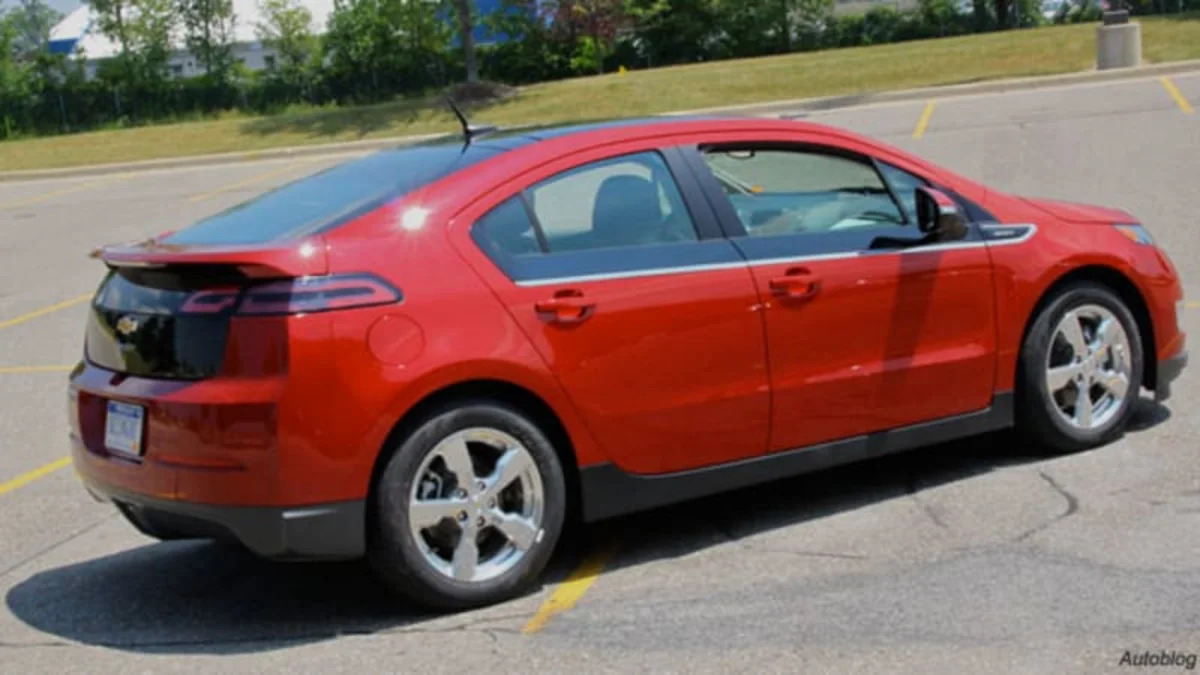
We already ran through the Chevy Volt's features and options, so today we'll go deeper into the driving experience.
 On the road, the Volt provides a good balance between ride comfort and handling. If we had to criticize the car we drove, we'd say it felt a bit too soft, though Chevy reps said the suspension was going to be tweaked slightly for a firmer ride before arriving at dealerships later this year. The Volt's 17-inch wheels wear Goodyear Assurance P215/55R17 all-season, low rolling resistance tires. This isn't the sportiest rubber on the market by a long stretch, so handling isn't razor sharp, but there is enough of an edge to make the car fun.
On the road, the Volt provides a good balance between ride comfort and handling. If we had to criticize the car we drove, we'd say it felt a bit too soft, though Chevy reps said the suspension was going to be tweaked slightly for a firmer ride before arriving at dealerships later this year. The Volt's 17-inch wheels wear Goodyear Assurance P215/55R17 all-season, low rolling resistance tires. This isn't the sportiest rubber on the market by a long stretch, so handling isn't razor sharp, but there is enough of an edge to make the car fun.
As expected, the Volt is remarkably quiet when operating in all-electric mode. But the car is still silent even when the gas engine comes on -- other than a light on the instrument panel, you really can't tell when the Volt goes into extended range operation. Now, if you drive the car aggressively, eventually you will hear the gas engine rev fairly high as it tries to match electrical output with driver demands. We were impressed that the Volt doesn't blow all its power right off the line, as even at 55 mph, there's still plenty left for passing. The Volt actually feels quicker from, say 50 to 75 than it does from a dead stop.
Total output for the Chevy Volt's electric drivetrain is a modest 150 horsepower, but with an impressive 273 lb-ft of torque the car accelerates fairly quickly. Compared to cars like the Prius or Leaf, the Chevy Volt certainly feels a little more powerful when stabbing the accelerator. That said, in any sort of high-speed driving situation, you can feel that the car is heavy for its size, due to the weight of the batteries.
The Volt has three driving modes: normal, sport and mountain. Normal is for everyday driving and is the most efficient, sport gives a slightly quicker response when accelerating, and mountain mode is a driver-selectable feature that runs the gas engine in order to store up electricity that might be needed for steep hills.
There's also a maintenance mode, a feature that helps make sure the gas engine is exercised occasionally. This is primarily for those owners who rarely drive beyond the electric range of 40 miles each day, meaning the range-extending gas engine wouldn't need to come on. Maintenance mode will switch the gas engine on automatically, but first asks the driver to "approve" before it kicks in. Cancel the request too many times and the engine will eventually just start on its own.
Hardcore greenies don't like that the Volt uses gasoline, and that's a fair criticism. But the fact is that with the range anxiety of an EV eliminated, the Chevy Volt is the greenest car that forces the fewest compromises. GM isn't going to save the planet overnight, but when it comes to real-world alternatives in personal transportation, the 2011 Chevrolet Volt sets the bar pretty high.


Sign in to post
Please sign in to leave a comment.
Continue